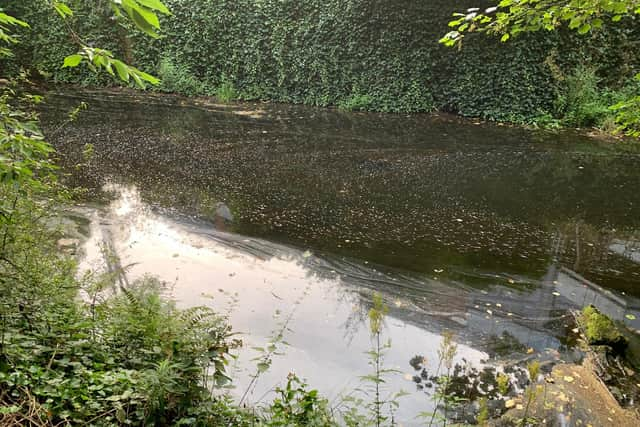Climate change: Water of Leith is so low it looks like the river has stopped flowing – Ian Johnston
While it had not, the amount of water in the river was so low that it had started to pool above a weir just upstream from Dean Village.
The surface was completely still with leaves and other floating detritus seemingly set in aspic, although walking along the path a short distance in either direction showed that the river was, thankfully, still flowing. This has happened before but has become an increasingly common sight this summer.
Advertisement
Hide AdAdvertisement
Hide AdAnd with the River Thames now five miles shorter after its source evaporated entirely and an extraordinary drought drying up rivers in France, could this be a sign that Scotland’s rivers, particularly on the east coast, are under similar threat?
According to the latest water scarcity report by Scottish Environment Protection Agency (Sepa), much of eastern Scotland is experiencing moderate water scarcity, with significant scarcity in mid and north Fife.
Sepa says the warming trend which has been affecting Scotland for several decades is set to produce “warmer, wetter winters and hotter, drier summers with more extremes” in the future. “Our climate is changing… these changes will have major implications for our way of life,” it says.
All this is, of course, in line with the general warming of the world as a result of the increase in the amount of greenhouse gases in the atmosphere, mainly caused by the burning of fossil fuels.


There are those who may regard global warming by an average of just over one degree Celsius as a small change.
However, the amount of energy it takes to cause this worldwide increase is absolutely enormous. According to a scientific paper published in 2020, the heat gained between 1971 and 2018 was about 358 billion terajoules. By comparison, the Hiroshima nuclear bomb generated about 63 terajoules.
What this means is that energy equivalent to several nuclear bombs is being added to the atmosphere every single second. And that vast amount of energy is having a similarly vast impact on our climate.
Despite this, the amount of greenhouse gases we are putting into the atmosphere is still increasing. Hopes of limiting climate change to 1.5C rest on being able to reduce emissions by at least 43 per cent by 2030, according to the Intergovernmental Panel on Climate Change. Given the current turmoil in the world, particularly Russia’s invasion of Ukraine, this seems highly unlikely to happen.
Advertisement
Hide AdAdvertisement
Hide AdAnd that puts the world on course for particularly “dangerous” climate change (the current heatwaves, wildfires, droughts and floods may seem bad, but these are not yet the worst effects feared by scientists).
Just over two degrees of warming would mean experiencing double the warming of the present day, making large areas of the world, already close to the limits of human survivability, uninhabitable.
Even in northerly Scotland, long summer droughts will increasingly turn some rivers into a series of ponds connected by little more than trickles of water. This is how a river dies.
And given water is so vital for life itself, a seemingly still pool where the Water of Leith should flow is a warning sign we cannot ignore.
Comments
Want to join the conversation? Please or to comment on this article.
